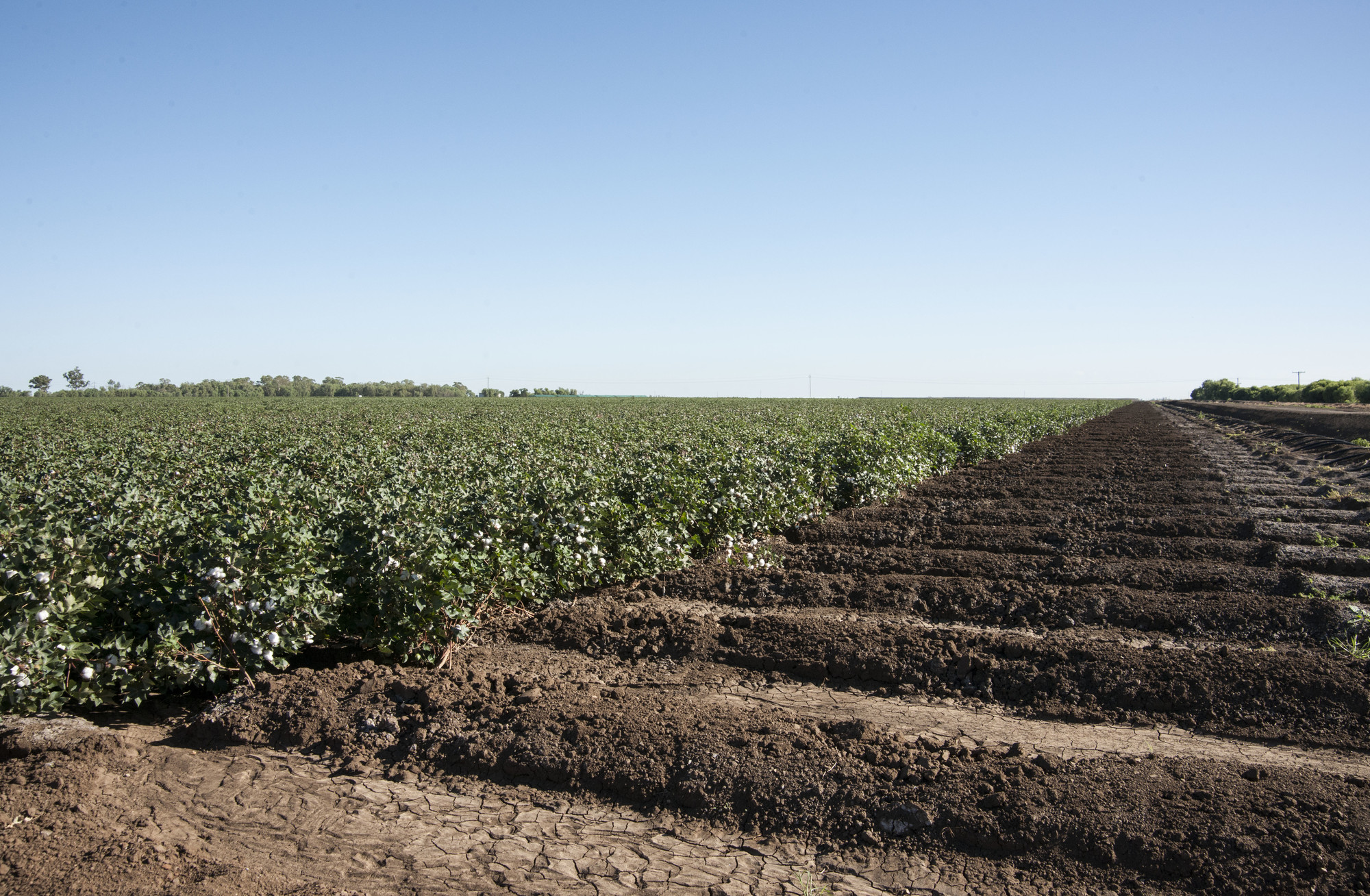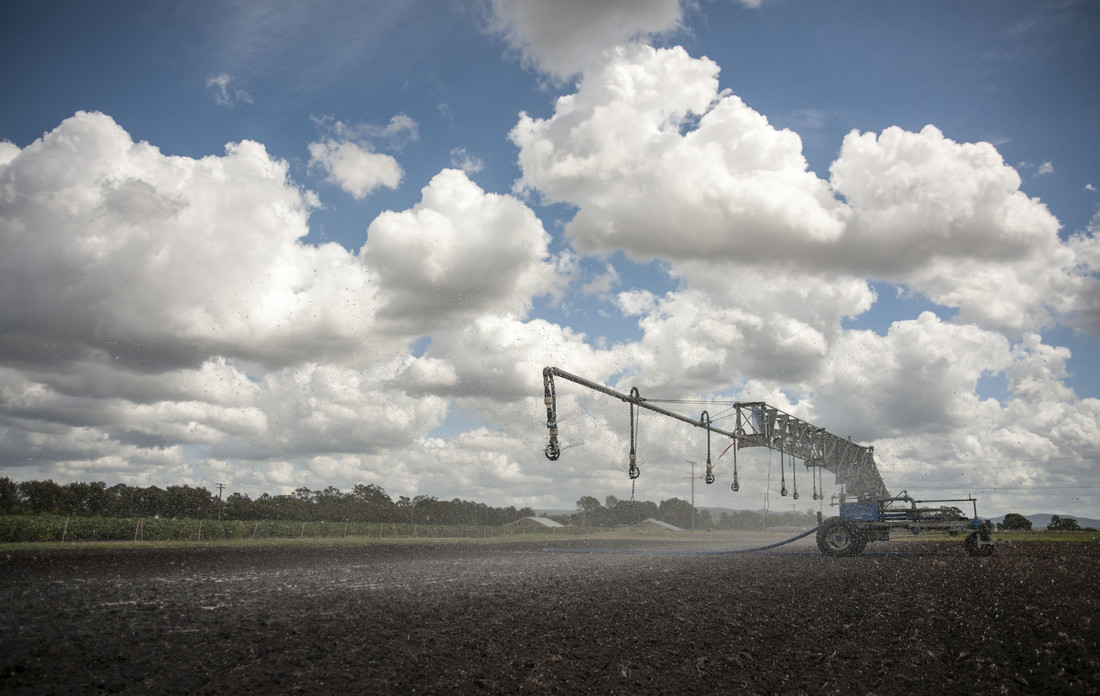
What does it take to be a successful irrigator during a drought? We’re looking to talk to farmers to find out.
What does it take to be a successful irrigator during a drought? We’re looking to talk to farmers to find out.
Calling all irrigators! Study to help in times of drought
Drought is an ongoing risk for any farm, with access to water vital for crop health. We also know that some farmers fare better during drought than others. But why is that?
For dryland (non-irrigated) farmers who grow crops such as wheat and canola, the general rule of thumb to capture and retain soil moisture is to maintain groundcover. This includes dead plant matter from the previous crop and minimising tillage (turning of soil). These strategies can allow one, or even two, extra plantings before soil moisture is exhausted during times of drought.
Dr Rose Brodrick, a senior research scientist with our Agriculture and Food team, said the picture for what makes irrigated crops successful in times of drought is less clear.
“Irrigated crops include cotton, rice and grapes. Irrigated farming is a more dynamic environment. The added element of watering crops is an integral part of the production mix,” she said.
While irrigated crops only use about 0.6 per cent of Australia’s agricultural land, they make up 30 per cent of gross agricultural production value. The frequency of droughts is predicted to increase. Developing successful strategies is of critical importance for Australia’s agricultural sector and its ability to supply us with food and fibre.
Gaining a better understanding of water use
A new study is looking to interview Australian irrigators. This is to better understand what strategies they use and improve recommendations for before, during and after droughts.
“We know that during the millennium drought, water allocations dropped by two-thirds. But incomes for irrigators only dropped 20 per cent,” Rose said.
“Part of that success is certainly higher commodity prices. But we also know that farmers changed their crop types, engaged in only partial irrigation, or changed water sources.”
Some crops were hit harder than others. Two million fewer hectares were irrigated due to drought conditions in 2018-19. Cotton production declined by 53 per cent, rice by 90 per cent, sugarcane by 13 per cent, and irrigated pastures by 18 per cent.
“It’s an under-explored area of research. We’re looking to talk to irrigators across Australia to better understand what worked and didn’t work for them. Especially with the most recent drought still current or fresh in memory,” Rose said.
The research team is looking to speak to a diverse cross section of the irrigation sector from all states in Australia that have experienced drought.
“Everyone is on our radar from small to large businesses, and those who grow different crops such as pastures, broad acre, perennial and annual horticulture crops,” she said.

It’s not as simple as ‘just add water’. Irrigated farming is a dynamic environment that requires more research.
It’s not as simple as ‘just add water’. Irrigated farming is a dynamic environment that requires more research for when water availability decreases.
Improving outcomes in the next drought
Climate projections show droughts will become more frequent and severe in the future. Research for the longer-term sustainability and viability of irrigated agriculture is critical.
The research team look to implement the findings of the study before the next widespread drought hits Australia.
“The implications of this work extend well beyond the farm gate. Many regional communities rely on a strong agricultural sector for their livelihoods. And the rest of the community depends on the food it produces,” Rose said.
“If we can reach irrigators and share their learnings with the wider industry, it’ll be a huge benefit to us all.”
If you’re an irrigator and want to be involved in the study, please contact Rose Brodrick.
This study is part of CSIRO’s work to develop a mission to improve Australia’s drought resilience. We aim to improve outcomes for regional communities, industries and the environment from droughts.


20th February 2021 at 9:24 am
See pages 264-277 in the CRDC publication Waterpak
19th February 2021 at 6:35 pm
Really?, This part of irrigation cropping has been done to death. See CRDC Rresearch
19th February 2021 at 3:57 pm
To Rose Brodrick and all the CSIRO people working on this project,
thank you for your insight and concern for the land, the farmers and the future of our communities. Thank you also to the willing participants who assist you! There must be many people like me, who are grateful for the fascinating and life changing work of the CSIRO. We may be busy doing our little bit for the welfare of our environment and people, but we should not ignore the essential contributions made by people like you. So every success, enjoy the process. I ‘tips me lid’ to you all ! M A Mitsikas